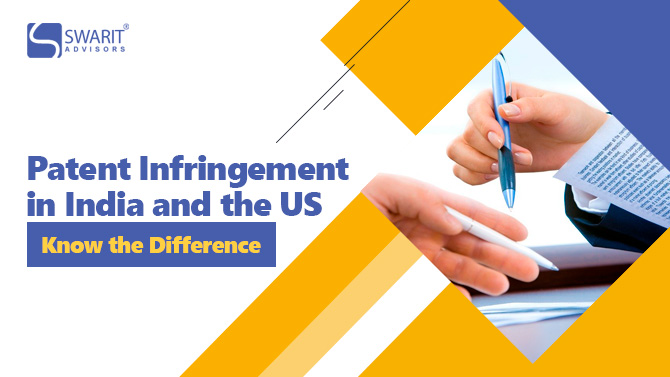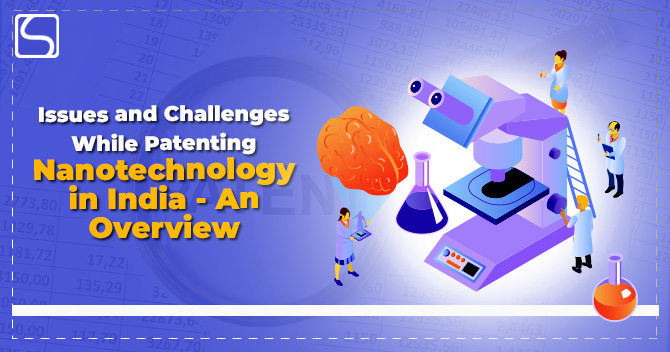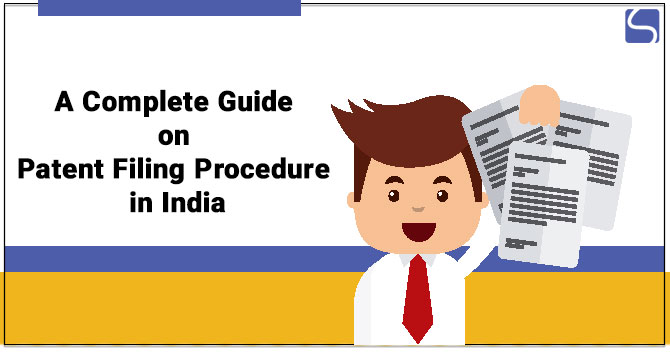Patent Infringement in India and the US – Know the Difference

Karan Singh | Updated: Jul 20, 2021 | Category: Patent
The significance of infringement of any Intellectual Property Right (IPR) is almost the same globally; there may be a few aspects or grounds which might differ from nation to nation as per their particular laws. Identically, the rules and the laws governing Patent Infringement in Indian and the US are highly identical, but there are some provisions, procedural factors and determinants that make the filing and procedure for Patent Infringement in both nations a bit dissimilar from each other. In this write-up, we are going to emphasise a few major points that distinguish between the procedure & filing process among both nations.
Table of Contents
Patent Infringement in India and the US – Overview
A Patent Infringement is illegal using, making, selling, offering for sale any Patent invention within India, or importing into India of any patented invention during the term, Patent Infringement is not completely described under the Patent Act; the regulating provisions concerning the Patent Infringement are Section 104 to Section 114 of the Patents Act, 1970.
Since Patents are public documents and the information is readily available, but it is unauthorised of the owner of the Patent Registration sues, the Court could direct the respondent to stop the unauthorised activity of the Patent the owner can also get financial damages for the illegal use. Section 48 of the Patent Act delivers the right to a Patentee. A Patent is issued under the Patent Act, the right is conferred upon the Patent owner where the matter of the subject of the Patent is a product, and the Patent owner has an exclusive right to prevent 3rd parties, who don’t have this approval, from the Act of selling, using, making, sale offers, or importing the product in India.
Thus, the infringement of this right would amount to or comprise the infringement of Patent. The Patent Act regulates the issuance of Patent Registration in the US with the workings of the USPTO (the United States Patent and Trademark Office). Provisions for infringement of Patent have been laid down under the Title 35 of the United States Code 271 of the Act that declares:
- Whoever without right uses, makes, offers to sell or sells any invention, within the US (United States), or imports into the United States (US) any patented invention during the Patent term, hence, violates the Patent;
- Whoever vigorously induces Patent Infringement shall be accountable as an infringer;
- Whoever furnishes to sell or sells within the US or imports into the US a part of a patented machine, combination, composition, manufacture, or material/apparatus for use in performing a patented process, establishing a material aspect of the invention, knowing the same to be specially made or adapted for use in a violation of such Patent, and not a staple article or commodity of commerce appropriate for considerable non-infringing use, shall be accountable as a contributory infringer.
The vital difference between the Patent laws between both nations is in the way they are articulated and enforced. The United States adopts a more demonstrative strategy where it signifies what can be patented under the Patent Act whereas, Patent laws in India are more towards the feature concerning what cannot be patented.
How to Determine That a Patent has been Accused and Violated?
To implement due diligence on the rights that have been given to a Patent owner, they should implement for or undertake periodic supervising of patented processes or products to makes sure that there are no infringing activities by the opponents. It is recommended that the Patent owner should have a market watch to keep an eye on opponent products/processes and different other ways like employing Patent analytics to supervise Patent publications of possible competitors whether they are not coming up with any inventions which might be hazardously close or significantly identical to the patented inventions that the Patent owner must-have.
In the United States, by and enormous, to enforce a Patent against an intruder or infringed product, an owner of a Patent will file a case on an infringer in a civil suit. Determining whether there is any violation, a two-step examination is conducted by the Court. The starting step involves claiming building, in light of the case language, the written representation of the exacting specification, prosecution history of the Patent, and exterior proof that is appropriate in knowing the Patent.
A very particular & specific examination of the Patents is done to find out whether infringement has occurred. Each aspect of a Patent Infringement claim made by the Patent owner is compared to all the factors of the respondent’s process or product. Infringement of a Patent occurs when it is certain that all the factors of both the parties match or are very identical in their functionality & operations, which is also known as the doctrine of correspondents.
Limitation Period – Patent Infringement in India and the US
The limitation period is regulated by the Limitation Act, 1963[1], in India. The limitation period of bringing a Patent Infringement suit that is three years from the infringement date. A load of proof (Section 104A) lies on the respondent where for attaining a product, the Court may direct the respondent to prove that the process used by the respondent to arrive at the process in question is dissimilar from the patented process if:
- The subject matter of the procedure for attaining a new product;
- The Patent owner cannot find out the process actually used; the Patent owner has first proved that the product acquired by the alleged infringer is similar to the product directly attained by the patented process.
In the United States of America (USA), under Section 286, the owner of a Patent can file for their Patent Infringement within a time of six years after the infringer has done the infringement action date. This time duration may be extended if the Patent owner and the infringer agree to do so mutually during their settlement negotiations. It is compulsory that the Patent should be vigorous at the time to constitute a basis of an infringement action. The protection time of a Utility Patent under the Patent Act lasts for twenty years, whereas Plant & Design Patent lasts for a shorter period of twenty years.
Function and Powers of a Court
Section 105 of the Patent Act lays down the Court’s power to make a declaration as to non-infringement. The conditions would be that the applicant has requested to the Patent owner for written acknowledgement concerning non-infringement and when the Patent owner has refused to give or furnish such declaration.
In the US, the final decision regarding whether there is a Patent Infringement is made by the Court. At the time of trial, if an infringement is proved, then the infringer is bound to reimburse for damages to the patentee for the losses caused to the patentee due to the infringement of the Patent. The Court may also award injunction in some cases, such as a preliminary injunction or temporary confining order may also be issued by the Court.
Conclusion
The laws of Patents in India and the US are identical, but the procedure and filing processes are not the same in many different ways. In India, the date of filing the Patent of an invention by an individual finds out who the inventor of a process or product is. The first individual who files an application for Patent Registration is declared to be the inventor. Whereas, in the US, this is entirely different; in the case of more patent applications, the individual who invented a product or a process first is deemed to be the inventor. In India, the examination of an infringement is carried out, which finds out whether a claim in an infringement process of a Patent, it is recommended to have a Patent comprising claims that make it relevant to prove that a violation is simply proved.
Read our article:Patent Infringement Letter- An Overview














